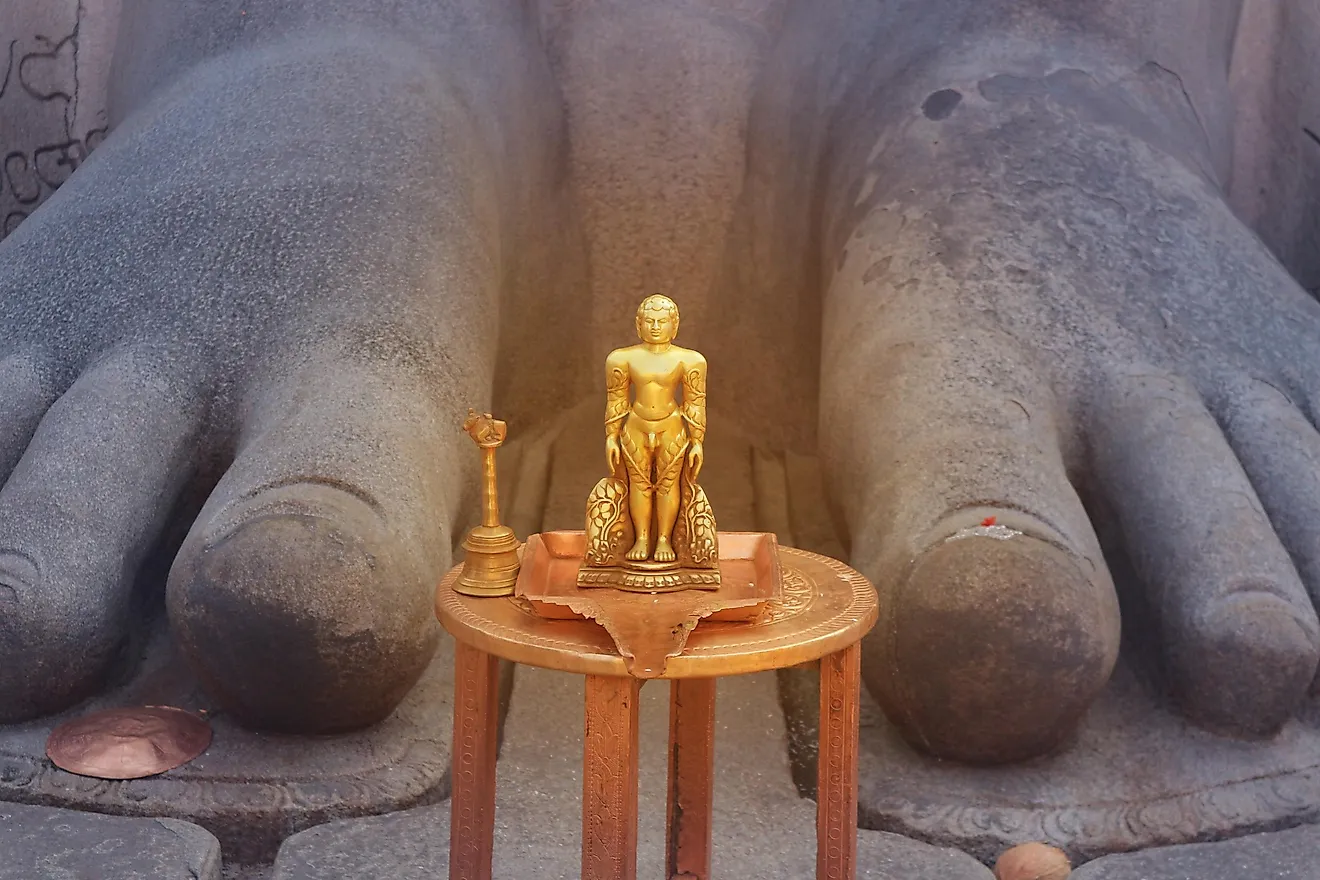Where Did Jainism Originate?

Jainism is an old dharmic religion that teaches the way to enlightenment and divine purity through being non-violent to all living creatures on earth. The followers of Jainism are known as Jains. Jainism is one of the most ancient dharmic religious traditions still being practiced today that was founded in ancient India. The Jains can trace the history of their religion through a succession of twenty-four saviors or teachers called Tirthankaras. The Jains revere Rishabhanatha as the first Tirthankara of this time-cycle. Parshvanatha is the twenty-third Tirthankara while Mahavira is the twenty-fourth.
The Origin Of Jainism
The Jains believe that their religion is eternal and that Rishabhanatha, the founder of Jainism, lived for 8,400,000 Purva years. Historians believe that the twenty-four Tirthankaras are mythical figures. Different historians have different views on the exact origin of Jainism. According to Otto Max Helmuth, a German indologist and religious scholar, the source of Jainism can be traced to the twenty-third Tirthankara, Parshvanatha. He claims that the other twenty-two Tirthankaras are mythical figures.
Tirthankaras
The Jain believes in twenty-four Tirthankaras, but the scholars consider the last two based on the historical figures of the first millennium BCE. Some of the Buddhist sources only mention Mahavira as part of an ascetic tradition and not the founder of a tradition resulting in many historians concluding that he was a reformer of a tradition. Mahavira was the most influential teacher of Jainism during the sixth century BCE, but most Jains consider him to be the last Tirthankara of this cosmic age. The twenty-third Tirthankara is believed to have lived between the ninth and the seventh centuries BCE. The Jainism texts refer to Neminatha (the twenty-second Tirthankara) as Krishna’s cousin (the Hindu god).
The Main Philosophies Of Jainism
Ahimsa
Ahimsa is one of the fundamental principles of this religion, which means non-injury or non-violence. Ahimsa stipulates that all Jains must abandon all violent activities, and without leaving violence, all religious activities are worthless. Non-violence is the top sacred duty of a Jain, regardless of how defensible or correct the act of violence might seem. Various texts stipulate that all Jains must renounce all killing of living things, whether immovable or movable, large or tiny. The Jains believe that violence can destroy someone’s soul, especially when it’s done with carelessness, hate or intent. Ahimsa can be found in both Buddhist and Hindu canonical texts. However, no other religion in India has developed this doctrine in their daily life like Jainism.
Anekantavada
The word anekantavada is derived from the phrases ‘’anekanta’’ which means ‘’many-sidenesses’’ and ‘’vada’’ meaning ‘’doctrine’’. The anekantavada principle states that reality and truth are complicated and have numerous aspects. Realities can be experienced, but it is not possible to fully express them in words. The Jains believe that no statement can describe an absolute truth.
Aparigraha
The third doctrine of Jainism is Aparigraha, which stipulates that the Jains should never be attached to worldly possessions. Jainism requires that all the people living an ascetic kind of life to vow never to own properties, but the laypersons can own limited properties and give the excess away to charities. Unchecked attachment to worldly possessions can cause direct harm to someone’s personality.











